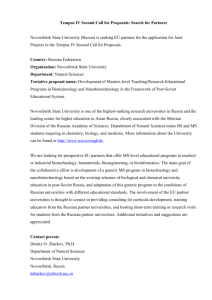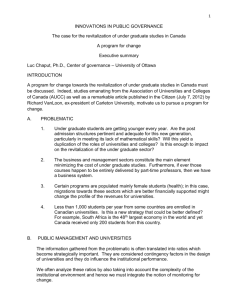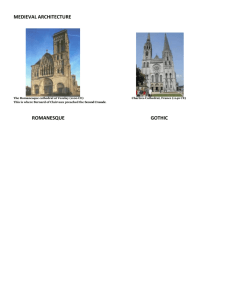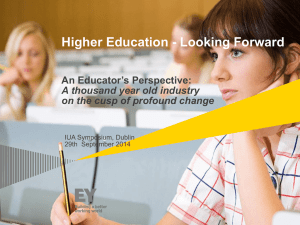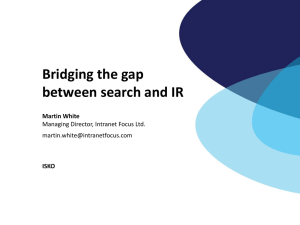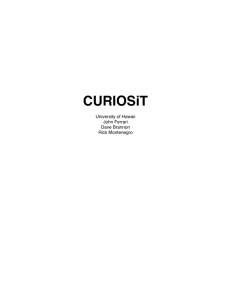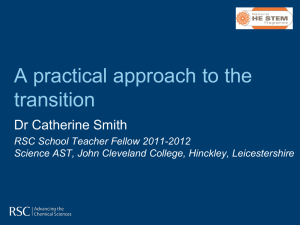Higher Education in Russia Ph.D., Associate professor Daria K
advertisement
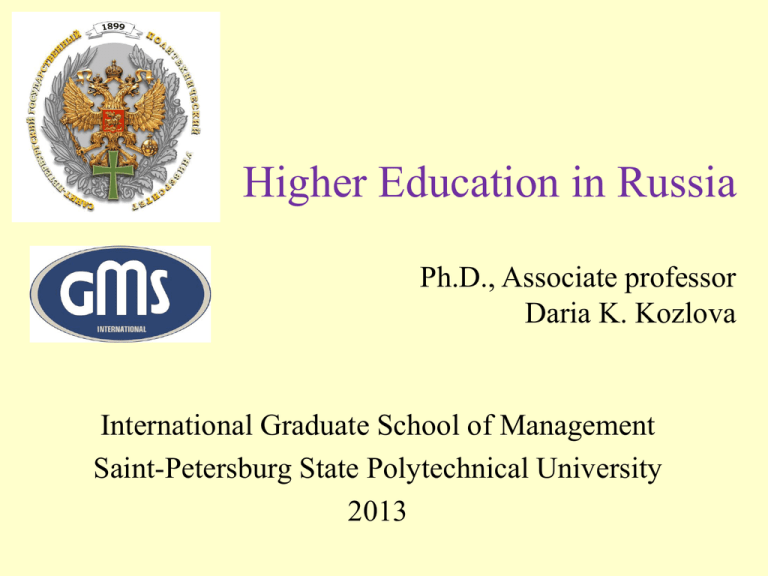
Higher Education in Russia Ph.D., Associate professor Daria K. Kozlova International Graduate School of Management Saint-Petersburg State Polytechnical University 2013 Structure of presentation: • • • • Facts and figures about higher education in Russia Challenges, emerging trends New opportunities and perspectives Questions and discussion General information • 1352 Institutions of higher education: 687– State 665 – Private • Federal budgeting: 4,1% GDP • Minister of education: D. Livanov • People with higher education: 77% Sources: HDR 2012, Rosstat, Ministry of Education RF New structure of higher education in Russia •2 leading classical Russian Universities: SPbSU, MSU; • 7 Federal Universities; • 27 National Research Universities; Things to be changed in Russian higher education • “Demographic hole” 2010-2016 90% applicants accepted to the universities; • High average age of the university professors and staff; • 25% of professors and staff speak English (officially); • Theoretical education dominates; University monitoring 2012 by Minister of education • 541 State Institutions of HE and 994 affiliates have been inspected; • Criteria: • • • • • • Level of education, Level of internationalization, R&D, Financial achievements, Infrastructure. Results: Ineffective Institutions: 34% in Moscow, 25% in St.Petersburg, 100% in Chechnya, 100% in Ingushetia. Emerging trends Strategy 2020- social and economic development: • Consolidation of universities; • Applied bachelor degree – 3-year bachelor; • Affordable educational loans; • Competitive salary for professors and staff: 160% by year 2015, 220% by year 2020; • Federal financing, depending on the level of the applicants’ knowledge; • Governmental support for R&D Universities; • University competition; • Development of entrepreneurship education; • Life-long education. New opportunities and perspectives • • • • • • New possibilities for the internationalization; New quality of higher education; European approach; New goals in scientific research (citation index); Reduction of number of universities; Reduction of university staff and professors; Perspectives for Russian-Finnish educational cooperation • Simplified cooperation with universities of applied sciences; • Flexibility with double-degree Masters programs; • Development of joint research activities May 2012, president V.V. Putin the decree # 599 on State policy in sphere of higher education and science: By the year 2020 at least 5 Russian Universities have to be among top 100 in the world university rankings. Budgets • For 2013-2030 - additional 100 billion EURO to achieve goals of the strategy 2020 (from Ministry of Finances); • PLUS additional 10 billion EURO to be among top 100 Universities (calculation of Ministry of Education).




